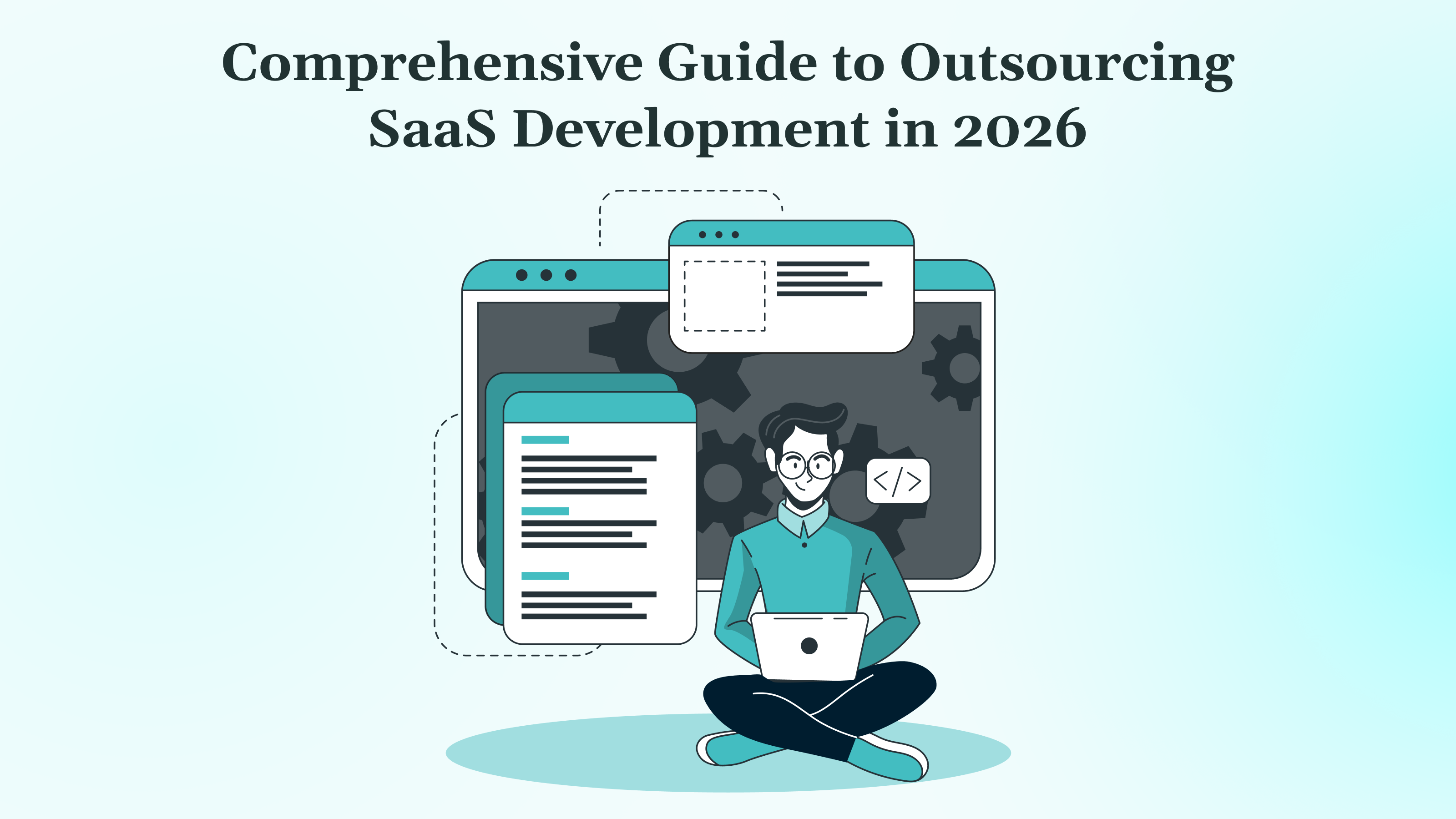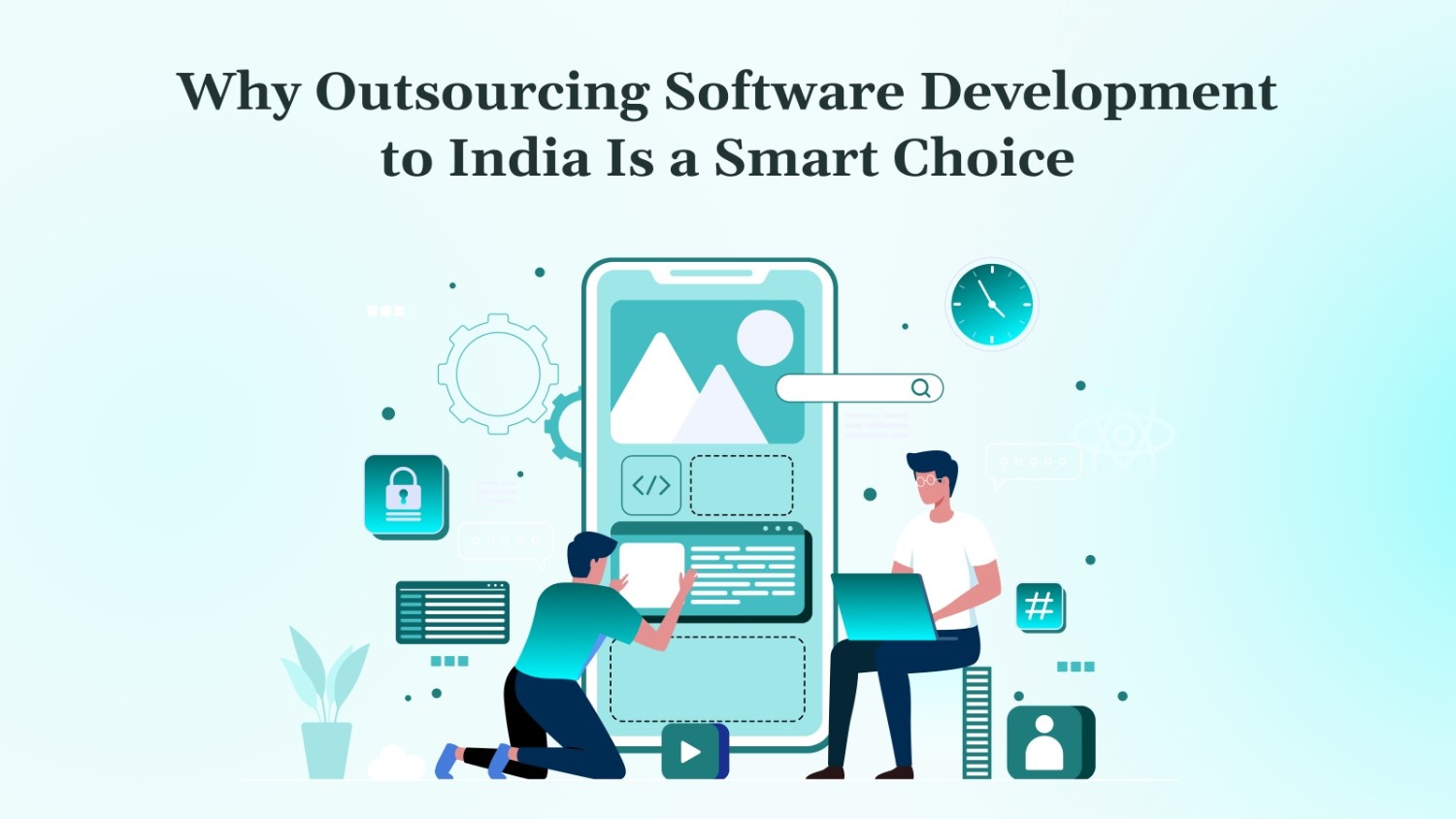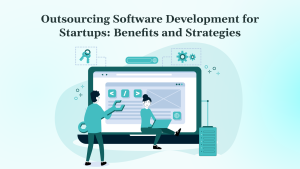IT outsourcing means hiring an external provider to handle your tech needs, everything from software and infrastructure to help desk support.
We understand that navigating the world of IT outsourcing can feel complex and overwhelming, especially when balancing cost, quality, and control concerns.
It started as a way to reduce costs but has become a key strategy for growth and efficiency. Organizations now use it to tap into specialized skills, speed up delivery, and let internal teams focus on core initiatives.
In this guide, you’ll learn what IT outsourcing is, the common models used, why it matters, and the challenges to watch for. We’ll also help you understand when outsourcing makes sense and how to get it right, from selecting a provider to setting up governance and tracking success.
Key Takeaways
- IT outsourcing lets businesses delegate IT tasks to external experts.
- It supports efficiency, speed, and access to specialized skills.
- Outsourcing models include onshore, nearshore, offshore, and hybrid arrangements.
- Be aware of risks like control loss, security, hidden costs, and contractual issues.
- Use best practices: choose the right model, vet vendors, set governance, and measure results.
What Is IT Outsourcing?
IT outsourcing involves hiring external service providers to manage parts or even all of your IT functions. These functions can range from handling infrastructure and applications to running business processes that depend on technology.
When a business chooses to outsource IT, it relinquishes day-to-day technical responsibilities like network maintenance, application updates, or help desk support. The external provider takes over these duties, bringing their own tools, processes, and expertise. This setup can include cloud services such as Software-as-a-Service (SaaS) and utility computing, allowing companies to move away from in-house operations.
What makes IT outsourcing valuable is its flexibility. Instead of maintaining a full internal IT team, companies can scale services up or down depending on their current needs.
Outsourcing also provides access to specialists with experience in domains like cybersecurity, cloud platforms, app development, and system integrations. Companies can choose from various models, such as project-based contracts, dedicated teams, or managed services, depending on their goals and resources.
Outsourcing isn’t the same as subcontracting. Subcontracting fills specific roles within an ongoing project under your direct control. In contrast, outsourcing transfers entire IT functions to an external vendor, who manages them independently.
In essence, IT outsourcing lets businesses focus on strategic efforts. Companies can offload routine technical duties and concentrate on core priorities.
Outsourcing also supports faster deployment of new systems, quicker scaling of infrastructure, and access to advanced skills, all without the burden of hiring, training, or acquiring costly technology. When thoughtfully planned and governed, outsourcing can be a key driver of efficiency and innovation. Let us move on to explore the various types of outsourcing by location and model.
Types Of Outsourcing By Location & Model
IT outsourcing comes in many forms. Each choice affects how you work, the talent you tap, and your control over the project. Let’s explore the main options by location and engagement:
Onshore, Nearshore, And Offshore
When you choose onshore outsourcing, you work with a provider in your own country. Communication is seamless, thanks to shared time zones, language, and legal systems. It’s ideal for businesses that need close coordination. But it often comes with a higher price tag and may limit access to specialized tech talent.
Nearshore outsourcing involves partnering with a company in a nearby country. This usually means working within similar time zones and cultures, while gaining some cost savings. It strikes a balance between quality and efficiency. Travel remains manageable, and collaboration stays smooth.
Offshore outsourcing means working with a provider in a distant country. It often delivers the greatest cost savings and access to large talent pools. You can grow your team quickly and tap into niche skills. Yet, this model requires strong management to bridge time zones, language, and cultural gaps.
Engagement Models
How you engage with your outsourcing partner shapes the dynamics of the relationship. The engagement model sets expectations around scope, budget, and control:
- A Fixed-Price model sets clear scope and deliverables for a set fee. This works best when requirements are well-defined. You benefit from cost certainty, but you’ll need change orders if plans shift.
- The Time-and-Material model charges based on actual hours and resources used. It’s ideal for flexible, evolving projects. You’ll see costs tied to work done, which keeps things transparent. But budget predictability depends on tight oversight.
- A Dedicated Team model gives you a hand-picked group working exclusively on your project. You direct priorities, while the provider handles onboarding and HR. This is an excellent setup for long-term projects with evolving needs.
Often, companies blend these models. For example, start with a fixed-price proof of concept, then transition to a dedicated team as the project scales.
Emerging Hybrid Models
Hybrid models mix and match traditional outsourcing approaches. One example is functional sourcing, where specific tasks are assigned to offshore teams, while strategic oversight remains in-house. This allows 24/7 operations with managed quality.
Another model is vested outsourcing, which focuses on outcomes and shared gains. Both sides invest in each other’s success, aiming for innovation, transparency, and mutual growth.
By choosing hybrid arrangements, organizations can build deeper partnerships. They go beyond cost savings to foster long-term value and continuous improvement.
DEVtrust is a leading custom software development provider that embraces this philosophy, partnering closely with clients to deliver tailored software solutions that drive growth and innovation.
Now the question is, why should anyone outsource IT?
Why Outsource IT?
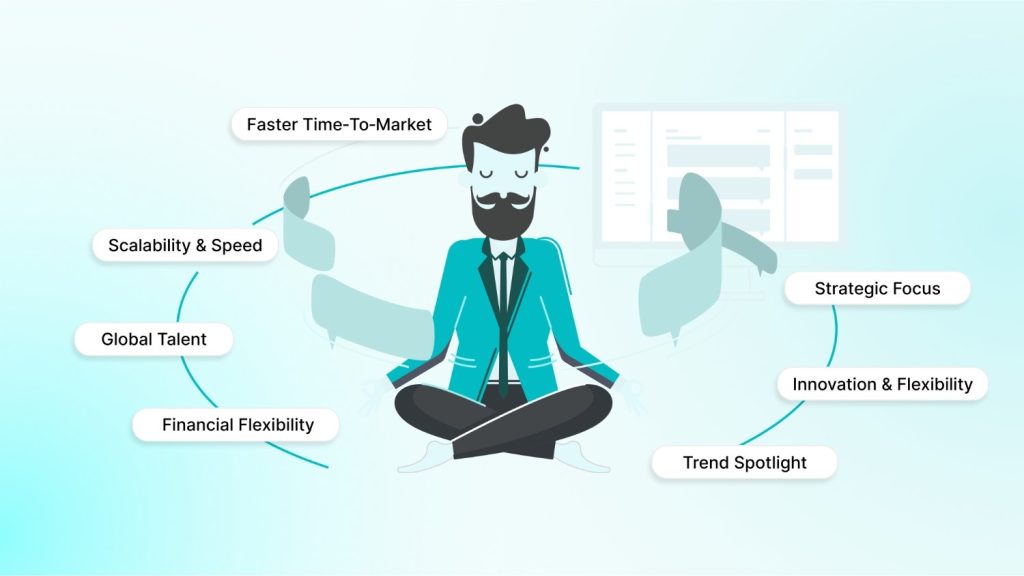
Companies outsource IT for many reasons. At its core, outsourcing offers flexibility and access to expertise that internal teams may lack. By shifting certain responsibilities, businesses can refocus on strategic priorities and respond faster to change. Below, we explore these key motivators in depth.
Cost Savings & Financial Flexibility
Outsourcing IT removes much of the overhead tied to hiring full-time employees and buying expensive equipment.
Companies can switch fixed costs into variable ones, paying only for what they use. This also reduces investment in training and infrastructure. Over time, these efficiencies can greatly ease strain on budgets.
Access To Global Expertise
By working with external providers, businesses gain access to a wider pool of skilled professionals.
These partners often bring experience in niche areas like cloud computing, cybersecurity, or advanced analytics. This avoids the long delays and high costs of recruiting and training in-house specialists.
Scalability & Speed
Outsourced IT models allow companies to scale resources quickly. Whether launching a new project or handling seasonal demands, providers can rapidly adjust team size. This agility avoids the delays of onboarding or shedding staff and keeps operations lean.
Faster Time‑To‑Market
When companies partner with providers skilled in development and deployment, they can move faster.
Experienced teams hit the ground running, avoiding typical in-house setup delays. This ability to launch products or updates quickly gives businesses a competitive edge.
Strategic Focus
Outsourcing allows internal teams to concentrate on core business initiatives. Routine IT tasks, like network management or help desk support, can be handed off, freeing leadership to innovate and execute strategic projects.
Innovation & Flexibility
Many IT providers stay ahead of technology trends and can introduce new tools and processes.
They often have specialized teams dedicated to innovation, enabling clients to embrace advances, such as automation, AI, or advanced security, without building those capabilities in-house.
Trend Spotlight
Modern outsourcing has shifted from transactional to strategic partnerships. Models like outcome-based or on-demand outsourcing prioritize business goals over hours worked.
Providers now integrate agile methods, AI, and industry-specific solutions to deliver tailored results and ongoing value. So, which industries are using IT outsourcing?
Industries Benefitting The Most From IT Outsourcing
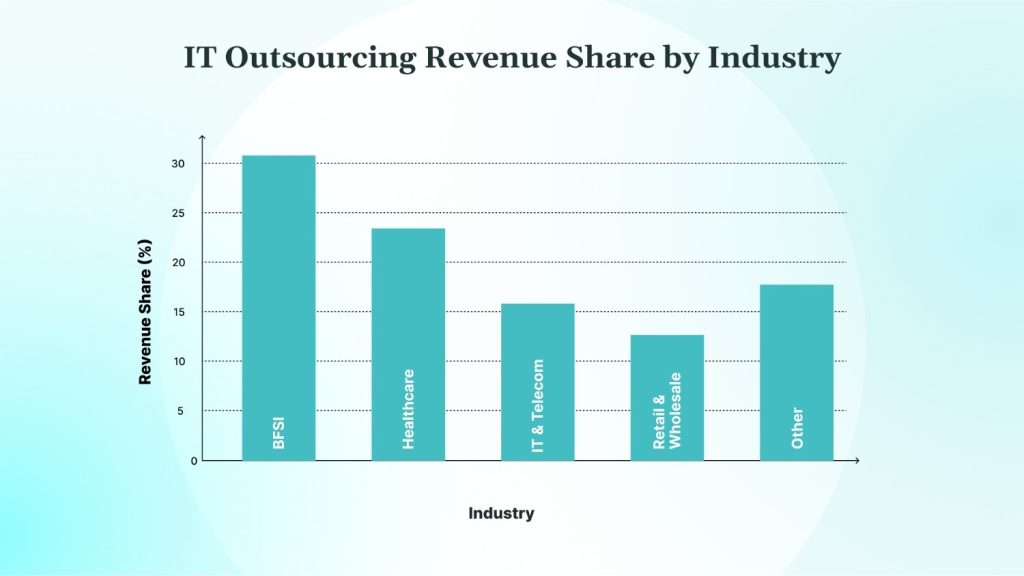
IT outsourcing serves a wide range of industries, each gaining unique advantages. While the approaches vary, the core benefit lies in freeing businesses to focus on innovation while trusted partners manage their tech needs. The following industries often reap the greatest returns from this model.
BFSI
The Banking, Financial Services, and Insurance (BFSI) sector handles critical, secure, and data intensive operations, holding 30.29% of the IT outsourcing revenue share. Outsourcing supports these firms by enabling them to adopt advanced systems without inflating internal headcount. External teams can develop secure platforms, manage compliance tools, and integrate fintech solutions, leaving clients to maintain focus on core financial services and customer satisfaction.
Healthcare
Healthcare providers must balance patient care with regulatory standards and digital needs. Outsourcing here holds a 23.43% revenue share and relieves them from routine tech work by delivering EHR integrations, telehealth tools, and administrative systems. This allows clinicians to improve outcomes while outsourced experts ensure system reliability and compliance.
IT & Telecom
Even tech giants occasionally outsource to scale quickly or fill skill gaps. IT and telecom firms turn to external developers for network automation, system maintenance, and software feature development. This enhances flexibility and keeps talent pipelines fresh, without overextending internal teams.
Retail & Wholesale
Retailers and wholesalers rely on tech for inventory, logistics, and online sales. Outsourcing helps them launch e-commerce platforms, manage POS systems, and build analytics dashboards. It delivers a competitive edge by improving speed, reliability, and scalability, especially during peak shopping periods.
Other
Beyond these main sectors, many fields gain from outsourcing. Energy, manufacturing, transportation, education, and public sector entities often need specialized solutions like IoT, ERP, or compliance systems. Outsourcing provides cost effective access to expertise, enabling these industries to innovate faster and adapt to digital trends.
IT outsourcing is not limited to one niche. From building healthcare platforms to automating telecom networks, outsourcing helps industries focus on what they do best.
It provides the speed, expertise, and scalability that drive modern growth. In the meantime, industry experts shall not overlook the risks and challenges that may come with IT outsourcing.
Risks And Challenges Related To IT Outsourcing
Outsourcing IT delivers many advantages, but it also brings risks pertaining to control and security, among several other aspects. These challenges can impact project success if left unchecked. In this section, we explore five common risks and how to address them effectively.
Loss Of Control & Quality Issues
Handing over IT work can reduce your visibility into day-to-day operations. You may feel disconnected from project progress and worry about standards slipping.
To regain control, lay out clear governance structures. Define roles, set quality benchmarks, and schedule regular check-ins. Use tools like dashboards and milestone reviews to track progress. This keeps your standards visible and ensures problems get flagged early.
Security & Privacy Issues
Sharing sensitive data with external teams raises security and privacy concerns. Without proper safeguards, you risk breaches and compliance violations.
Address these issues with strict protocols. Require vendors to follow standards like ISO 27001 or NIST. Sign an NDA and build security expectations into your contract. Regular audits and secure access tools further protect your assets.
Hidden Costs
Outsourcing often seems cost-effective, but surprises can emerge. Extra fees for changes, support, or travel can add unpredictably to your budget.
Avoid this by making your contract transparent. Define the scope clearly and choose the right billing model. Include clauses for scope changes, contingencies, and clear pricing. Track spend regularly to keep costs in check.
Human Factors
Cultural differences, language gaps, and remote team dynamics can affect communication. Misunderstandings may slow development or reduce efficiency.
Bridge these gaps through structured collaboration. Use standardized tools across teams. Offer cross-cultural orientation sessions. Align on working hours that overlap. Frequent video calls help build rapport and reduce friction.
Contractual Pitfalls
A poorly crafted contract can lead to missed deliverables, IP risks, or a lack of exit options. Ambiguity invites conflict and uncertainty.
Craft clean agreements that outline scope, performance metrics, IP ownership, exit clauses, and penalties. Include SLAs, data protection terms, and clear dispute processes. Review and update contracts as the project evolves.
With risks and considerations clear, businesses shall move their sights to best practices in IT outsourcing.
Best Practices For IT Outsourcing

Executing a successful IT outsourcing engagement requires more than choosing a provider. It demands careful planning, structured governance, and ongoing collaboration. Below are key practices to help you build and maintain a strong partnership.
Choosing The Right Location And Model
Start by aligning the outsourcing location and engagement model with your business objectives. For example, you may prioritize outsourcing supported by advanced investment and automation tools if you are a real estate business.
Offshore models offer cost advantages and access to diverse talent pools. Consider hybrid options that mix models to balance cost, culture, and control. The goal is to find a setup that supports both your immediate needs and your long-term strategy.
Vetting Partners
Selecting the right partner goes beyond technical fit. Look for providers with proven experience in dealing with your brand and your industry’s specific priorities. Review portfolios, ask for client references, and explore their project methodologies.
Seek teams that follow agile development, maintain transparent communication, and prioritize quality control. A strong partner will align with your values and business goals.
Contract Setup
A well-structured contract forms the backbone of a stable partnership. It should clearly define project scope, deliverables, pricing models, and SLAs.
Include terms for confidentiality, IP rights, and exit clauses. Consider defining escalation paths and penalties for unmet commitments. This clarity helps avoid misunderstandings and sets expectations from the start.
Governance & Oversight
Strong governance keeps the partnership on track. Define roles and responsibilities across both teams. Set up regular checkpoints like weekly status calls, monthly steering reviews, or quarterly business updates.
Use dashboards to track performance against SLAs and KPIs. Consider adopting SIAM principles for managing multiple providers in a cohesive, coordinated manner.
Knowledge Transfer & Team Integration
Knowledge transfer is essential when onboarding an external team. Provide them with documentation, user stories, and technical architectures. Use shadowing or paired sessions with your internal team. Cultural and system training fast-tracks understanding and aligns practices. Deep integration builds trust and ensures consistency in delivery.
Continuous Evaluation
Outsourcing is not a set-and-forget deal. Track performance regularly against defined metrics. Review progress after each milestone. Use feedback loops to adjust processes, tools, or team composition.
Stay open to innovation and encourage your partner to propose improvements. Periodically revisit contract terms to ensure they still align with evolving business needs. For example, as an Edtech leader, your priorities may go from progress tracking to AI-driven enhancements in learning. Your partner needs to understand the focus well to help you closely.
By following these steps, choosing wisely, vetting thoroughly, writing solid agreements, governing proactively, enabling integration, and evaluating continuously, you set the foundation for a productive and resilient outsourcing partnership. This approach helps turn external teams into strategic allies, enabling long-term success.
Conclusion
IT outsourcing can change the way a business operates. When done right, it frees internal teams to focus on core priorities and brings in outside expertise without long hiring cycles. With clear goals, strong governance, and the right provider, it can strengthen your operations and drive innovation.
It’s not a one-size-fits-all solution. Success depends on choosing the right engagement model, managing risks like control and security, and maintaining a collaborative mindset. Continuous oversight and open communication turn outsourcing from a one-time project into a long-term advantage.
Looking to leverage IT outsourcing for your next big initiative? Talk with DEVtrust to explore custom solutions, expert teams, and best-in-class governance.
The Definitive Guide To IT Outsourcing
Explore the top IT outsourcing models, benefits, risks, and best practices to streamline operations and drive growth through smart external partnerships.
Contact Us
